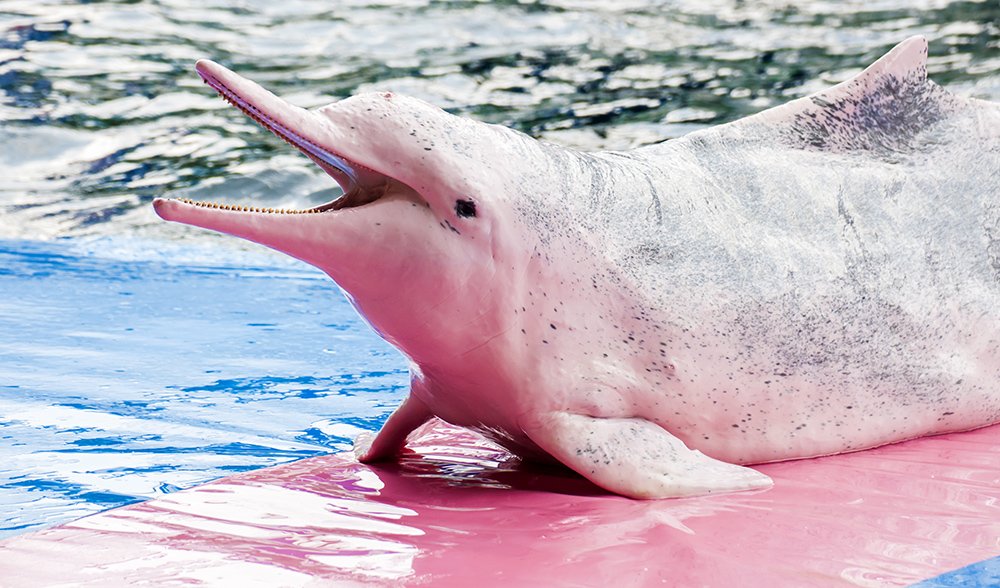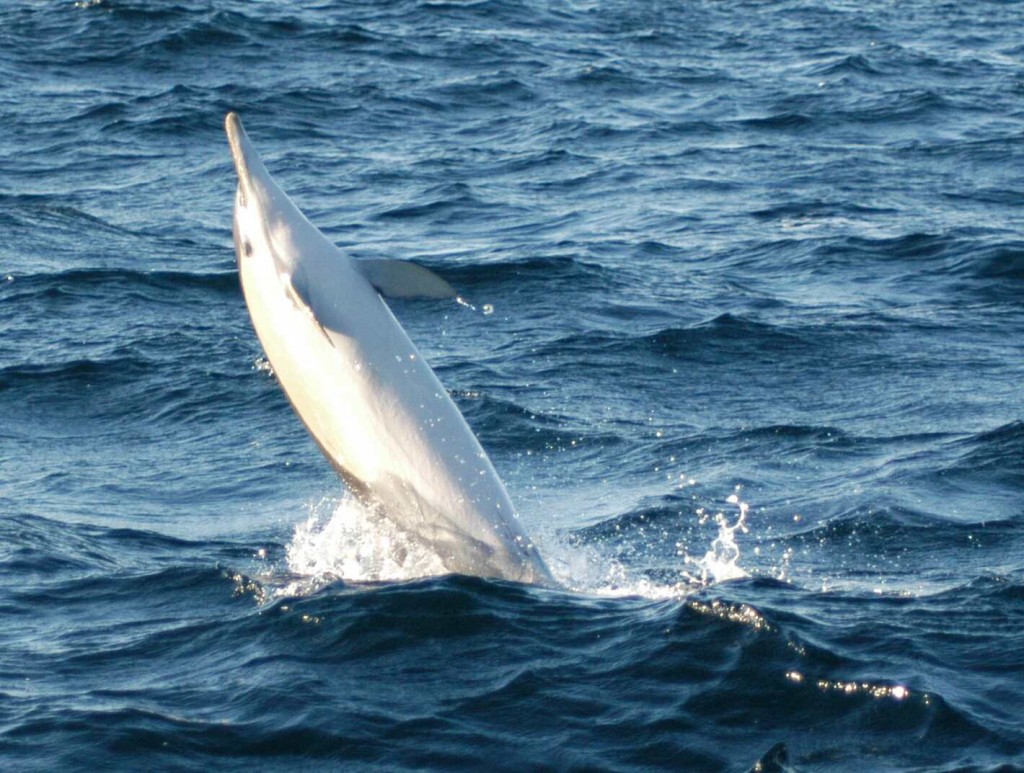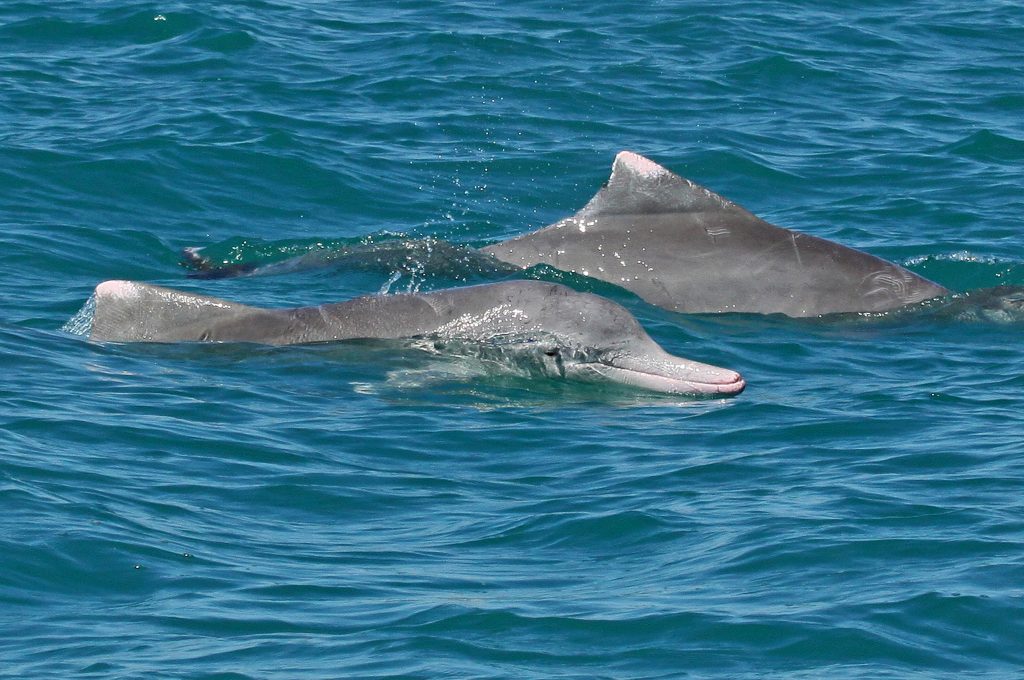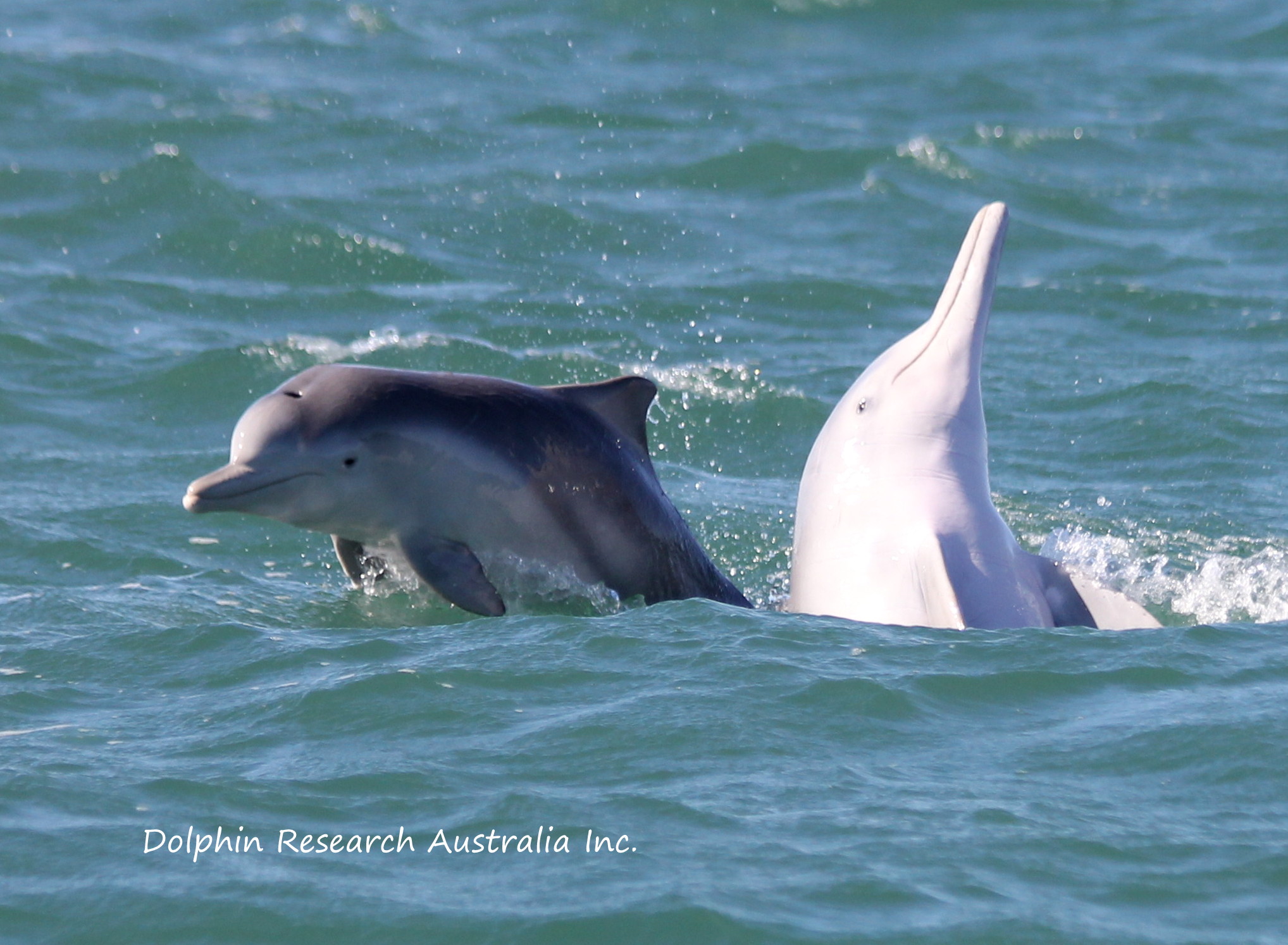Humpback dolphins Researchers track vulnerable species in Moreton Bay
Australian humpback dolphins produce different underwater sounds described as broadband clicks, barks, quacks, grunts, and whistles.Broadband clicks span 8 kHz to at least 22 kHz. They are directly associated with foraging behavior but may also be used in social interactions. Barks and quacks are burst pulse sounds (0.6 kHz to > 22 kHz, with a duration of 0.1-8 s) and are associated with both.

Australian Humpback Dolphin Discovery of Sound in the Sea
Bottlenose and Australian Humpback Dolphins are abundant in the area, with babies being calved around this time. It is only recently that the Australian Humpback was acknowledged as a separate species, with it's distinctive dark triangular dorsal feature making it easy to differentiate from Bottlenoses. They usually live in pods of up to six.

Australia Scientists Discover New Species of Humpback Dolphin [PHOTOS]
Feeding. Definition: Dolphins are actively pursuing prey and feeding (often confirmed by visual observation of fish or prey item). Usually associated with deep diving (fluke-up dives), fast swims or porpoising, frequent changes in travel direction and inconsistent inter-breath intervals. Group may be in a circular formation, spread over a wide.

Australian Humpback Dolphin (Sousa sahulensis) ZooChat
Male and female Australian Humpback Dolphins grow to a length of between 2.6m and 2.7m reaching physical maturity at around 14 years of age (sexual maturity occurs between the ages of 10 to 13 years). In the wild, these dolphins will live to around 40 years of age. These dolphins have a cruising speed of 4 knots with a top speed of 11 knots.

Australian Humpback Dolphin ZooChat
The Australian humpback dolphin becomes the fourth recognized humpback dolphin species. The study appears online today in the journal Marine Mammal Science , and will appear in the journal's.

The pink IndoPacific humpback dolphin Australian Geographic
The Australian humpback dolphin (Sousa sahulensis) is a species of humpback dolphin and the fourth recognized humpback dolphin species chronologically. The specific name sahulensis is derived from the Sahul Shelf, located between northern Australia and southern New Guinea, where the Australian humpback dolphins occur.. The species was scientifically described on 31 July 2014 in the journal.
Humpback dolphins Researchers track vulnerable species in Moreton Bay
General description. In 2014 the Australian humpback dolphin was recognised as a separate species to the Indo-Pacific humpback. As suggested by its name the Australian humpback dolphin has a hump at the base of the dorsal fin, although this is less obvious than the Indo-Pacific dolphin. There is substantial variation in colouration among.

Australian Humpback Dolphin Discovery of Sound in the Sea
The Australian humpback dolphin (Sousa sahulensis) is a species of humpback dolphin and the fourth recognized humpback dolphin species chronologically.The specific name sahulensis is derived from the Sahul Shelf, located between northern Australia and southern New Guinea, where the Australian humpback dolphins occur.. Show More The species was scientifically described on 31 July 2014 in the.

Australian Humpback Dolphin Dolphin Research
australian humpback dolphin societies Typically found in small populations (~100) within their range and in small groups of around 4-5 individuals. They are very social animals and live in complex fission-fusion societies where the composition of groups can change over time.

Fact Sheet Australian Humpback Dolphin • Department of Primary
How fast can an Australian humpback dolphin swim? Australian Humpback dolphins move at a cruising speed of 4.6 mph (7.4 kph) and at a top speed of 12.6 mph (20.3 kph) How much does an Australian humpback dolphin weigh? The Australian humpback dolphin weighs almost 507.1-551.1 lb (230-250 kg). What are the male and female names of the species?

Australian Humpback Dolphin ZooChat
The Australian humpback dolphin (Sousa sahulensis) is a species of humpback dolphin and the fourth recognized humpback dolphin species chronologically. The specific name sahulensis is derived from the Sahul Shelf, located between northern Australia and southern New Guinea, where the Australian humpback dolphins occur.. The species was scientifically described on 31 July 2014 in the journal.

Moreton Bay Dolphin Project Dolphin Research Australia Inc.
The Australian humpback dolphin is a species of humpback dolphin and the fourth recognized humpback dolphin species chronologically. The specific name sahulensis is derived from the Sahul Shelf, located between northern Australia and southern New Guinea, where the Australian humpback dolphins occur.

Australian Humpback Dolphin Discovery of Sound in the Sea
Biology and Ecology Feeding. Humpback dolphins seem to be fairly adaptable in their diet, with studies from South Africa, Hong Kong, Australia and Oman revealing a variety of fish species, and sometimes crustaceans, squids, octopus and cuttlefish in the stomachs of by-caught or stranded animals 2-6.Humpback dolphins use a variety of feeding techniques, including partially stranding themselves.

New humpback dolphin species discovered off north Australia South
Australian Humpback Dolphin. Sousa sahulensis. Northern Australia and Southern New Guinea. Vulnerable. Indo-Pacific Humpback Dolphin. Based on observations that have been made so far, researchers say that the Indo-Pacific humpback dolphin performs the following behaviors. The observations may apply to the other species, too.

Australian Humpback Dolphin Dolphin Research
There are four recognized species of humpback dolphins with very little overlap between their ranges: the, Indo-Pacific humpback dolphin ( Sousa chinensis ), the Indian Ocean humpback dolphin ( S. plumbea) the Atlantic humpback dolphin ( S. teuszi) and the Australian humpback dolphin ( S. sahulensis) 1 . Because they tend to be relatively shy.
Rare Australian snubfin and humpback dolphins discovered in Papua New
Calves are highly. dependent on their mothers for the rst few years of life. Humpback Dolphin Societies • It is thought that humpback dolphins reach maturity between 10-12yrs. Females give birth to a single calf approximately every 2-4 • Typically found in small populations (~100) within their range and in small groups of around 4-5.